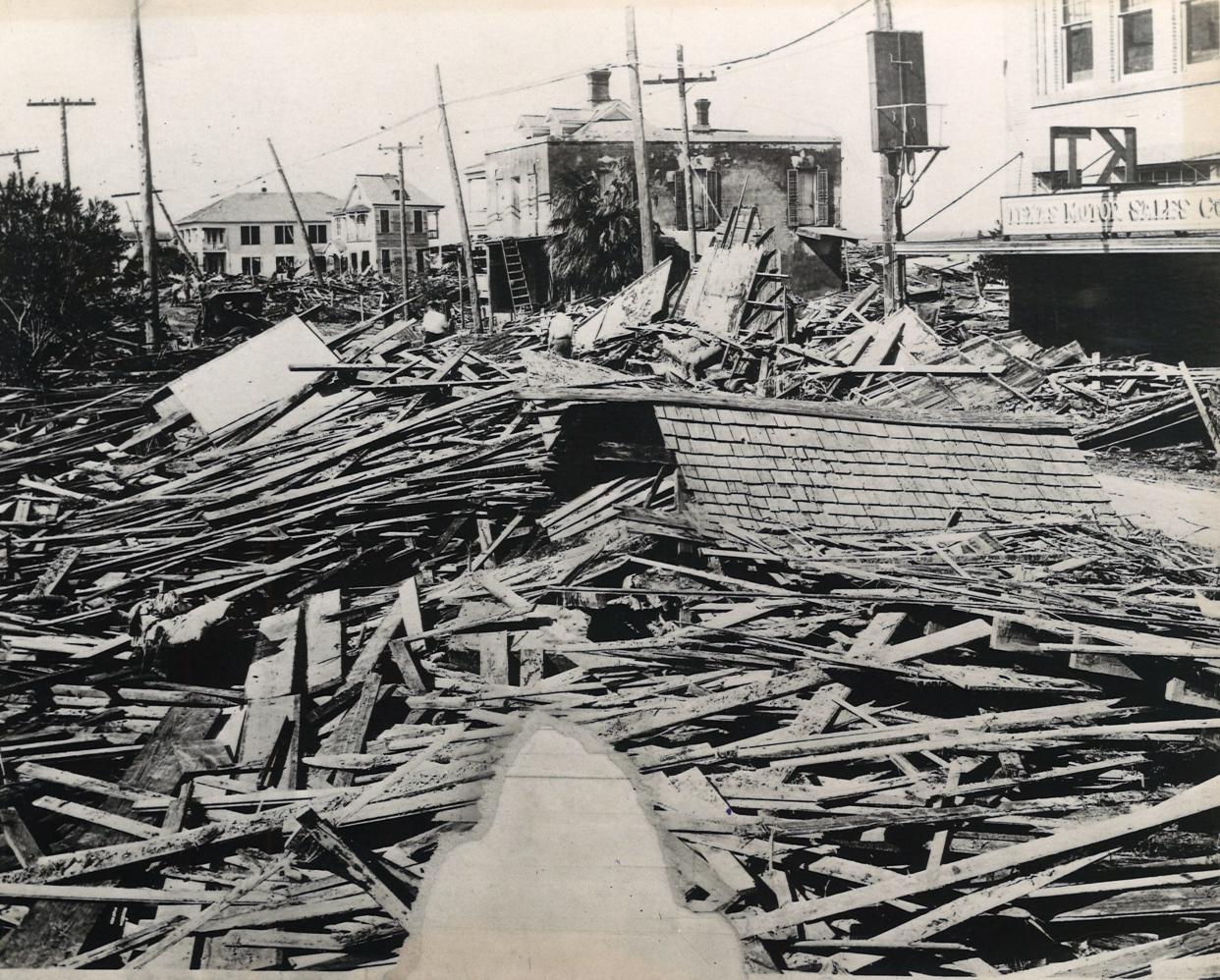Celia, Katrina and Harvey — these names are well known for people along the Gulf Coast.
Before 1953, tropical storms and hurricanes were tracked by year and the order in which they occurred during that year, not by names.
At first, the United States only used female names for storms. It wasn’t until 1978 when male names were added to the mix, but names were only given to Northern Pacific Storms. The following year was when storms in the Atlantic basin would be named.
History of hurricane, storm naming
During the 1800s and early 1900s, hurricanes that happened in the West Indies were named after the particular Saint’s Day on which the storm occurred.
In forecaster Ivan R. Tannehill’s book “Hurricanes,” some hurricanes included Hurricane Santa Ana, Hurricane San Felipe I and Hurricane San Felipe II. All three struck Puerto Rico in 1825, 1876 and 1928, consecutively.


Tannehill also mentioned Clement Wragge, an Australian meteorologist who name tropical storms after women before the end of the 19th century.
An early example of a woman’s name being used for a storm was in the 1941 novel “Storm” by George R. Stewart. The book was dramatized as “A Storm Called Maria” by Disney in 1959. During World War II, this practice became widespread in weather map discussions among forecasters, especially Army and Navy meteorologists who plotted the movements of storms over the wide expanses of the Pacific Ocean.
Why do we name storms?
Use of short, distinctive names — compared to cumbersome latitude-longitude identification — has shown to be an advantage to provide important storm details between hundreds of scattered stations, coastal bases and ships at sea.
As well, the use of easily remembered names reduces confusion when two or more tropical storms happen at the same time.
In the past, confusion and false rumors resulted when storm advisories would broadcast from radio stations, as sometimes warnings would be about an entirely different storm located hundreds of miles away.
How are names chosen?
Names have been set for 2024 since last year.
A list of names is established by an international committee of the United Nations World Meteorological Organization.
There are six alphabetical lists of names for Atlantic hurricanes and are rotated through every six years. In other words, one list is repeated every seventh year. The only time there is a change is if a storm is so deadly or costly that the future use of its name on a different storm would be inappropriate for obvious reasons of sensitivity. If that occurs, then at an annual meeting by the committee the offending name is stricken from the list and another name is selected to replace it.
A developing cyclone is given a name when it officially becomes a tropical storm, meaning it has sustained winds of at least 39 mph. Once maximum sustained winds reach 74 mph, the tropical storm becomes a hurricane.
What are the names for 2024?
-
Alberto
-
Beryl
-
Chris
-
Debby
-
Ernesto
-
Francine
-
Gordon
-
Helene
-
Isaac
-
Joyce
-
Kirk
-
Leslie
-
Milton
-
Nadine
-
Oscar
-
Patty
-
Rafael
-
Sara
-
Tony
-
Valerie
-
William
Retired names for hurricanes, storms
Storm names are retired if they were so deadly or destructive that the future use of the name would be insensitive. When a name is retired, it’s replaced by a new name.
As of May 2024, 96 names have been retired.
-
1950s: Carol, Hazel, Edna, Connie, Diane, Ione, Janet and Audrey
-
1960s: Donna, Carla, Hattie, Flora, Cleo, Dora, Hilda, Betsy, Inez, Beulah and Camille
-
1970s: Celia, Agnes, Carmen, Fifi, Eloise, Anita, Greta, David and Frederic
-
1980s: Allen, Alicia, Elena, Gloria, Gilbert, Joan and Hugo
-
1990s: Diana, Klaus, Bob, Andrew, Luis, Marilyn, Opal, Roxanne, Cesar, Fran, Hortense, Georges, Mitch, Floyd and Lenny
-
2000s: Keith, Allison, Iris, Michelle, Isidore, Lily, Fabian, Isabel, Juan, Charley, Frances, Ivan, Jeanne, Dennis, Katrina, Rita, Stan, Wilma, Dean, Felix, Noel, Gustav, Ike and Paloma
-
2010s: Igor, Thomas, Irene, Sandy, Ingrid, Erika, Joaquin, Matthew, Otto, Harvey, Irma, Maria, Nate, Florence, Michael and Dorian
-
2020s: Laura, Eta, Iota, Ida, Fiona and Ian
RELATED COVERAGE
More: Corpus Christi La Palmera’s Express store will close its doors in late June
More: ‘I can’t believe I’m first’: 47th annual Beach to Bay takes over Corpus Christi
John Oliva covers entertainment and community news in South Texas. Contact him at john.oliva@caller.com or X @johnpoliva.
Consider supporting local journalism with a subscription to the Caller-Times.
This article originally appeared on Corpus Christi Caller Times: Why we name tropical storms, how they are selected
